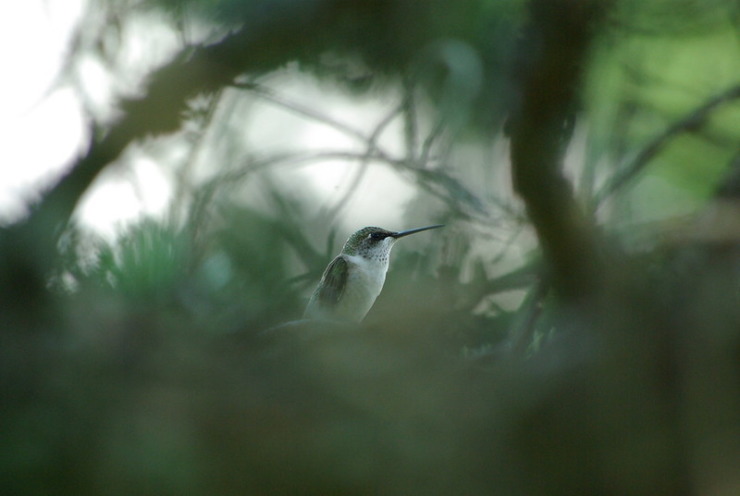I have three bookshelves in my basement filled with books in no particular order. This is not a lazy choice, but a deliberate one. I stand before my bookshelves like I stand before my wardrobe—I’m searching for something new in what I think I already know. I’m hoping for surprise.
That’s not the mystery. The mystery is this: I pulled Patricia Hampl’s I Could Tell You Stories: Sojourns in the Land of Memory from the shelf. I don’t know why I did this because my recollection of reading her book is that I didn’t love it. I remember thinking it was too hard to understand, but flipping through it, I was surprised how much I underlined, and how many notes I’d written in the margins.
“I like this not because I agree, but because I hear, ‘That’s how it felt for me.’ I respect Hampl’s story and opinion. I think that’s because of her voice.” This, in the margin of Hampl’s essay, “What She Couldn’t Tell.”
“Who wants to know someone who isn’t searching?” I asked alongside an exploration of Augustine’s Confessions.
Still standing in the front of my bookshelves, I was pleased to see I’d been interacting with a text even though I remember with an ache in my stomach how much I struggled to understand it.
It is the note on a bookmark that intrigues me the most. Slipped in between pages 100 and 101, with notes for a braided essay having to do with Mother Teresa, Princess Di, and my friend Alison and I, is a note to myself: “Pages 206-207 — Look at and think about carefully,” I wrote.
What in the world could I possibly be trying to tell myself, I thought as I quickly flipped to my assigned pages. Why did I mean for me to “look at and think about carefully” in these words? What struck me about them when I wrote this note, and will I know it when I read them now?
“I’ve heard people talk about their hearts being in their throats, but I feel this extraordinary sensation—my mind or my brain or whatever is me is in my throat,” Hampl writes towards the end of her essay, “The Need to Say It.” She is writing about a childhood memory. She’s in a Catholic classroom and her teacher, “Sister,” asks a question. Hampl doesn’t remember the question, she tells us, but she remembers the feeling of knowing the answer and she must—SHE MUST—be called upon to give the answer.
I know that feeling well. Maybe not the assurance that I have an answer, but rather the desire, the urge, the need, as Hampl writes, to say it.
“I’m throbbing with the answer to that question, and my arm shoots up. It’s waving crazily. I look like a drowning person grasping for help. But really, I’m a bird, mighty with song.”
I know this feeling, too.
Hampl doesn’t get called on. The nun passes right over her frantically waving hand. Then, there is another betrayal. Hampl looks out the window and sees two people—a boy and a girl—displaying the first fledgling signs of affection. Hampl thinks these two are her best friend and the boy she adores. She is devastated.
But back to the note on my bookmark. I want to know what it is I was trying to tell myself. Or, what it was that I felt, but couldn’t express. Did I write it down and leave it for an older, perhaps wiser Callie? Could it be that I left this note for myself because I believed one day I’d be less frazzled, less sensitive, more confident, more willing to sit with the inexpressible until I can express it?
I looked closer.
Hampl writes that the playground she sees these two people on is far away. She tells us she’s on the third floor. She admits that she doesn’t know for sure that these two are who she thinks they are. “But I’ve already pasted dreamy smiles on their faces,” Hampl says. She is miserable.
Here, as in the scene with her silently pleading with Sister to call upon her, Hampl is telling the truth about how she feels, and not of the facts of the story. Here, feelings move the story forward. Feelings are the story.
The first time I read Hampl’s collection of essays was for my first graduate school residency. One evening during that week, a somewhat famous film director led a seminar on a movie he’d made. I found the premise horrifying. Watching it, I felt like I was being assaulted. I knew part of it was fear, but the other part was I just didn’t understand, and it wasn’t just that night. All week I’d experienced what felt like a marathon of not understanding. I was the mighty bird that wanted to sing, that wanted what was inside me to come out, but I didn’t understand the notes.
I rushed out of the room and into the bathroom and erupted into loud, angry, sorrowful sobs. I feel those feelings in the pit of my stomach as if I’m experiencing them now. Holding Hampl’s book though, and reading the notes I’d made in the margins, I understand that I’d gotten the facts wrong. Maybe I understood more than I was giving myself credit for.
If only I knew why I’d written that note on the bookmark years ago. Maybe that’s more of the mystery—a mystery that isn’t meant to be solved so much as experienced and felt.
Maybe it’s this willingness to look and attend that allows the mighty bird to find and sing her song.
Photo by Ano Lobb, Creative Commons license via Flickr. Post by Callie Feyen.

– Celena Roldan
- Poetry Prompt: Courage to Follow - July 24, 2023
- Poetry Prompt: Being a Pilgrim and a Martha Stewart Homemaker - July 10, 2023
- Poetry Prompt: Monarch Butterfly’s Wildflower - June 19, 2023

Leave a Reply